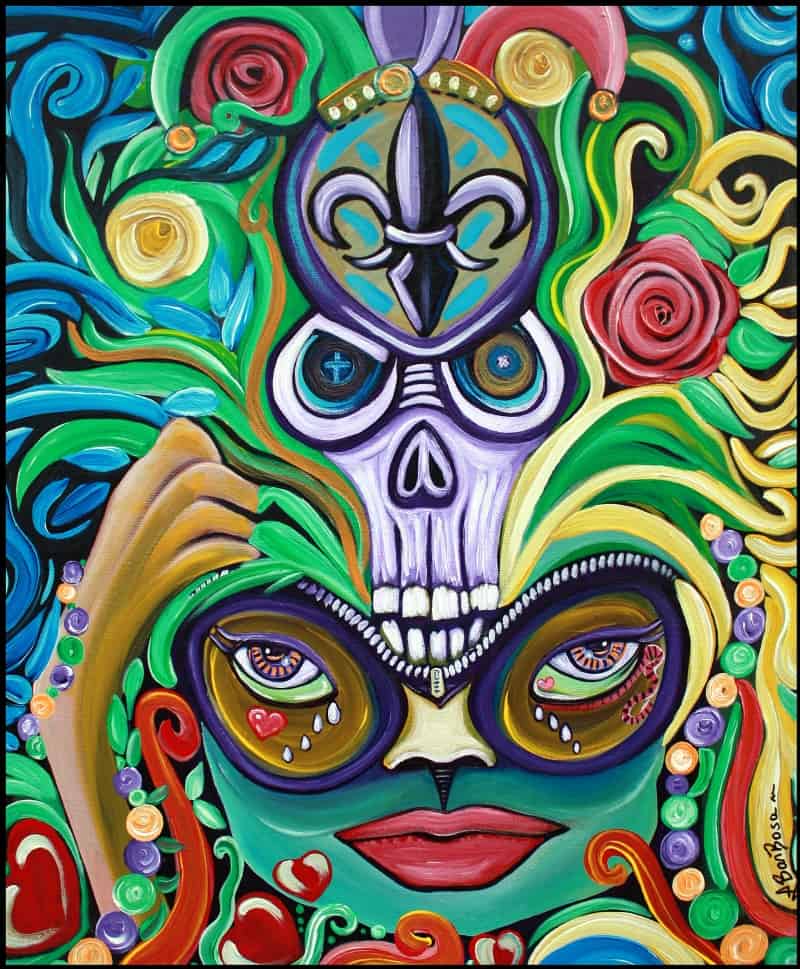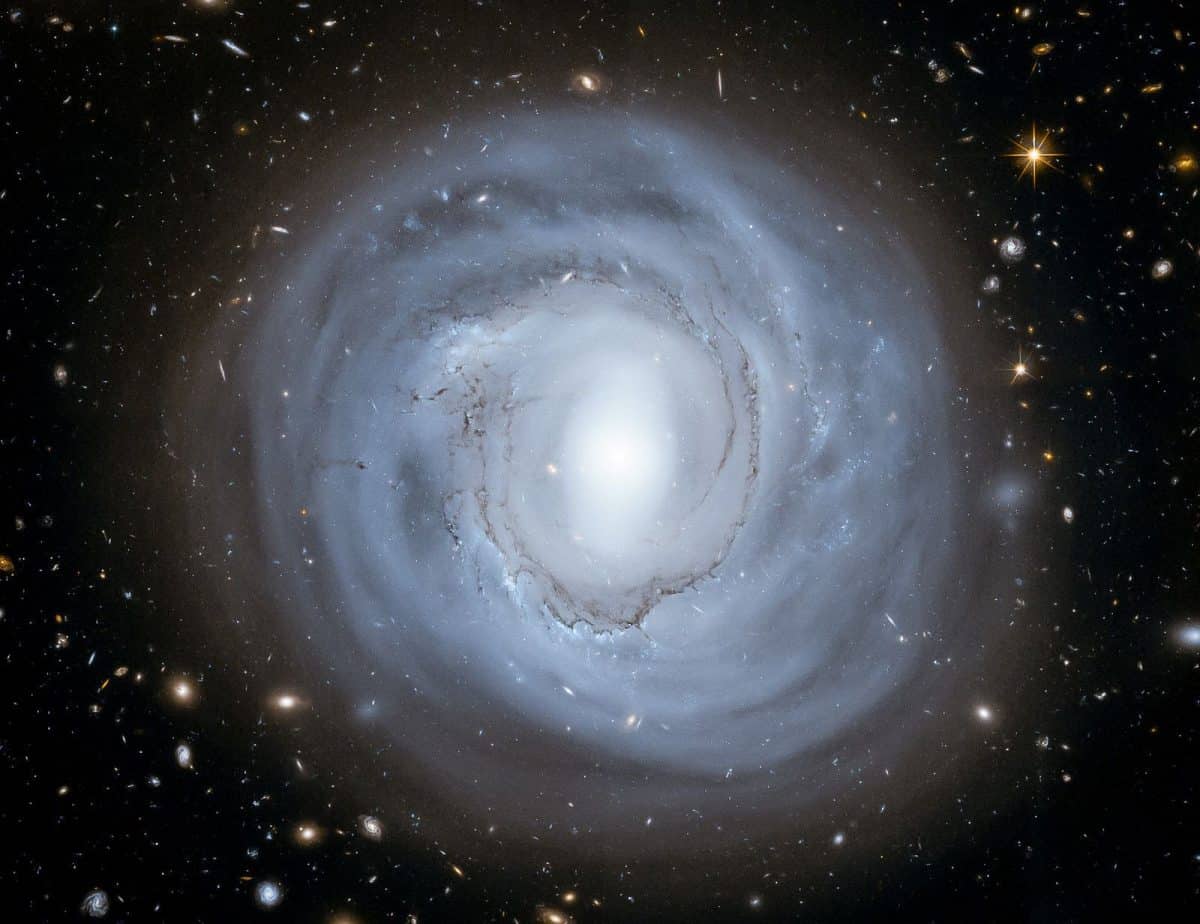Blog
Kenneth Earl Burrell (born July 31, 1931) is an American jazz guitarist known for his work on the Blue Note label. His collaborations with Jimmy Smith produced the 1965 Billboard Top Twenty hit album Organ Grinder Swing. He has cited jazz guitarists Charlie Christian and Django Reinhardtas influences, along with blues guitarists T-Bone Walker and Muddy Waters.
Burrell is a professor and Director of Jazz Studies at the UCLA Herb Alpert School of Music.
Burrell was born in Detroit, Michigan. Both his parents played instruments, and he began playing guitar at the age of 12. He went on to study composition and theory with Louis Cabara and classical guitar with Joe Fava. While a student at Wayne State University, he made his recording debut as a member of Dizzy Gillespie‘s sextet in 1951, followed by the “Rose of Tangier/Ground Round” single recorded under his own name at Fortune Records in Detroit. While in college, Burrell founded the New World Music Society collective with fellow Detroit musicians Pepper Adams, Donald Byrd, Elvin Jones, and Yusef Lateef.
more...Henry “Hank” Jones Jr. (July 31, 1918 – May 16, 2010) was an American jazz pianist, bandleader, arranger, and composer. Critics and musicians described Jones as eloquent, lyrical, and impeccable. In 1989, The National Endowment for the Arts honored him with the NEA Jazz MastersAward. He was also honored in 2003 with the American Society of Composers, Authors, and Publishers (ASCAP) Jazz Living Legend Award. In 2008, he was awarded the National Medal of Arts. On April 13, 2009, the University of Hartford presented Jones with a Doctorate Degree for his musical accomplishments.
Jones recorded more than 60 albums under his own name, and countless others as a sideman, including Cannonball Adderley‘s celebrated album Somethin’ Else. On May 19, 1962, he played piano as actress Marilyn Monroe sang her famous “Happy Birthday, Mr. President” song to then U.S. president John F. Kennedy.
Born in Vicksburg, Mississippi, Henry “Hank” Jones moved to Pontiac, Michigan, where his father, Henry Jones Sr. a Baptist deacon and lumber inspector, bought a three-story brick home.
more...John Dowland (1563 – buried 20 February 1626) was an English Renaissance composer, lutenist, and singer. He is best known today for his melancholy songs such as “Come, heavy sleep” (the basis of Benjamin Britten‘s 1963 composition for guitar solo, Nocturnal after John Dowland), “Come again“, “Flow my tears“, “I saw my Lady weepe” and “In darkness let me dwell“, but his instrumental music has undergone a major revival, and with the 20th century’s early music revival, has been a continuing source of repertoire for lutenists and classical guitarists.
https://www.youtube.com/watch?v=PvvumBKywDM
more...Messier 96, also known as NGC 3368, is a case in point: its core is displaced from the centre, its gas and dust are distributed asymmetrically and its spiral arms are ill-defined. But this portrait, taken with the FORS1 instrument on ESO’s Very Large Telescope, shows that imperfection is beauty in Messier 96. The galaxy’s core is compact but glowing, and the dark dust lanes around it move in a delicate swirl towards the nucleus. And the spiral arms, patchy rings of young blue stars, are like necklaces of blue pearls.
Messier 96 lies in the constellation of Leo (The Lion). It is the largest galaxy in the Leo I group of galaxies; including its outermost spiral arms, it spans some 100 000 light-years in diameter — about the size of our Milky Way. Its graceful imperfections likely result from the gravitational pull of other members in the group, or are perhaps due to past galactic encounters.
A multitude of background galaxies peers through the dusty spiral. Perhaps the most striking of these objects is an edge-on galaxy that — because of a chance alignment — appears to interrupt the outermost spiral arm to the upper left of Messier 96’s core.
This image was processed by ESO using the observational data found by Oleg Maliy from Ukraine, who participated in ESO’s Hidden Treasures 2010 astrophotography competition , organised in October–November 2010, for everyone who enjoys making beautiful images of the night sky using astronomical data obtained with professional telescopes. The image was made with data taken at visible and infrared wavelengths through B, V, and I filters.
more...David Sanborn (born July 30, 1945) is an American alto saxophonist. Though Sanborn has worked in many genres, his solo recordings typically blend jazz with instrumental pop and R&B. He released his first solo album Taking Off in 1975, but has been playing the saxophone since before he was in high school. Sanborn has also worked extensively as a session musician, notably on David Bowie‘s Young Americans (1975).
One of the most commercially successful American saxophonists to earn prominence since the 1980s, Sanborn is described by critic Scott Yannowas “the most influential saxophonist on pop, R&B, and crossover players of the past 20 years.” Sanborn is often identified with radio-friendly smooth jazz. However, Sanborn has expressed a disinclination for both the genre itself and his association with it.
In his career, Sanborn has released 24 albums, won six Grammy Awards and has had eight gold albums and one platinum album. He continues to be one of the most highly active musicians of his genre.
Sanborn was born in Tampa, Florida, and grew up in Kirkwood, Missouri. He suffered from polio for eight years in his youth, and began playing the saxophone on a physician’s advice to strengthen his weakened chest muscles and improve his breathing. Alto saxophonist Hank Crawford, at the time a member of Ray Charles‘s band, was an early and lasting influence on Sanborn.
more...George “Buddy” Guy (born July 30, 1936) is an American blues guitarist and singer. He is an exponent of Chicago blues and has influenced eminent guitarists including Eric Clapton, Jimi Hendrix, Jimmy Page, Keith Richards, Stevie Ray Vaughan, Jeff Beck and John Mayer. In the 1960s, Guy played with Muddy Waters as a house guitarist at Chess Records and began a musical partnership with the harmonica player Junior Wells.
Guy was ranked 30th in Rolling Stone magazine’s “100 Greatest Guitarists of All Time“. His song “Stone Crazy” was ranked 78th in the Rolling Stone list of the “100 Greatest Guitar Songs of All Time”. Clapton once described him as “the best guitar player alive”. In 1999, Guy wrote the book Damn Right I’ve Got the Blues, with Donald Wilcock. His autobiography, When I Left Home: My Story, was published in 2012.
Guy was born and raised in Lettsworth, Louisiana. He began learning to play the guitar using a two-string diddley bow he made. Later he was given a Harmony acoustic guitar, which, decades later in Guy’s lengthy career, was donated to the Rock and Roll Hall of Fame.
https://www.youtube.com/watch?v=CzIQkRBDyLY
more...Vernel Anthony Fournier (July 30, 1928 – November 4, 2000) and, from 1975, known as Amir Rushdan, was a jazz drummer probably best known for his work with Ahmad Jamal from 1956 to 1962.
Fournier was born in New Orleans, Louisiana, into a Creole family. He left college to join a big band led by King Kolax. After Kolax downsized to a quintet, Fournier moved to Chicago in 1948, where he played with such musicians as Buster Bennett, Paul Bascomb and Teddy Wilson. As house drummer at the Bee Hive club on Chicago’s South Side in 1953-55, he accompanied many visiting soloists, including Lester Young, Ben Webster, Sonny Stitt, J.J. Johnson, Earl Washington and Stan Getz.
more...Fakhriddin Umarov, the son of Aslpulat (September 1, 1926, Kibray) is a musician, composer, poet. People’s Chamber of Uzbekistan. He learned music from his father, then secretly from Askar Ubaydullayev, Akmalhon and Bobokhan Sufikhanov. Studied at the Tashkent Conservatoire (1950-53). The soloist of the Uzbek Radio Committee (1946-61), the Uzbek State Philharmonic (1961-86).
https://www.youtube.com/watch?v=JeMwzdcolkc&list=PLC8B72D05D28C6949
more...BEAU KOO JACKS Mardi Gras Music
Sunday July29th 10pm-midnight
Palmers Bar on the West Bank
with Van Nixon, Jamie Carter, Todd Matheson, Paul Strickland, Art Haynes with special guest David Hamilton and da file gumbo gris gris holder mick laBriola.
Riding high in the constellation of Auriga, beautiful, blue vdB 31 is the 31st object in Sidney van den Bergh’s 1966 catalog of reflection nebulae. It shares this well-composed celestial still life with dark, obscuring clouds recorded in Edward E. Barnard’s 1919 catalog of dark markings in the sky. All are interstellar dust clouds, blocking the light from background stars in the case of Barnard’s dark nebulae. For vdB 31, the dust preferentially reflects the bluish starlight from embedded, hot, variable star AB Aurigae. Exploring the environs of AB Aurigae with the Hubble Space Telescope has revealed the several million year young star is itself surrounded by flattened dusty disk with evidence for the ongoing formation of a planetary system. AB Aurigae is about 470 light-years away. At that distance this cosmic canvas would span about four light-years.
more...Cass Elliot (born Ellen Naomi Cohen; September 19, 1941 – July 29, 1974), also known as Mama Cass, was an American singer and actress, best known as a member of the Mamas & the Papas. After the group broke up, she released five solo albums. In 1998 she was posthumously inducted into the Rock and Roll Hall of Fame for her work with the Mamas & the Papas.
Ellen Naomi Cohen was born in Baltimore, Maryland, the daughter of Philip Cohen (d: 1962) and his wife Bess (née Levine, 1915–1994).
more...Donald Matthew Redman (July 29, 1900 – November 30, 1964) was an American jazz musician, arranger, bandleader, and composer.
Redman was born in Piedmont, Mineral County, West Virginia. His father was a music teacher, his mother was a singer. Don began playing the trumpet at the age of three, joined his first band at the age of six and by the age of 12 was proficient on all wind instruments ranging from trumpet to oboe as well as piano. He studied at Storer College in Harper’s Ferry and at the Boston Conservatory, then joined Billy Page’s Broadway Syncopaters in New York City. (He was the uncle of saxophonist Dewey Redman, and thus great-uncle of saxophonist Joshua Redman and trumpeter Carlos Redman.
https://www.youtube.com/watch?v=Iinepb4AbwU
more...Charles Henry Christian (July 29, 1916 – March 2, 1942) was an American swing and jazz guitarist.
Christian was an important early performer on the electric guitar and a key figure in the development of bebop and cool jazz. He gained national exposure as a member of the Benny Goodman Sextet and Orchestra from August 1939 to June 1941. His single-string technique, combined with amplification, helped bring the guitar out of the rhythm section and into the forefront as a solo instrument. John Hammond and George T. Simoncalled Christian the best improvisational talent of the swing era. In the liner notes to the album Solo Flight: The Genius of Charlie Christian (Columbia, 1972), Gene Lees wrote that “Many critics and musicians consider that Christian was one of the founding fathers of bebop, or if not that, at least a precursor to it.”
Christian’s influence reached beyond jazz and swing. In 1990, he was inducted into the Rock and Roll Hall of Fame in the category Early Influence.
In 2006 Oklahoma City renamed a street in its Bricktown entertainment district “Charlie Christian Avenue” (Christian was raised in Oklahoma City and was one of many musicians who jammed along the city’s “Deep Deuce” section on N.E. Second Street).
Christian was born in Bonham, Texas. His family moved to Oklahoma City, Oklahoma, when he was a small child. His parents were musicians.
In 1939, Christian auditioned for John Hammond, who recommended him to the bandleader Benny Goodman. Goodman was the fourth white bandleader to feature black musicians in his live band: the first was Jimmy Durante, for whom the clarinetist Achille Baquet played and recorded in Durante’s Original New Orleans Jazz Band (1918–1920); the second was the violinist Arthur Hand, who led The California Ramblers, which, from 1922 to 1925, included the trumpeter Bill Moore, who was billed as the Hot Hawaiian; the third was Ben Bernie, whose band from 1925 to 1928 also featured Moore. Goodman became the fourth by bringing in Teddy Wilson on piano in 1935 and Lionel Hampton on vibraphone in 1936. Goodman hired Christian to play with the newly formed Goodman Sextet in September 1939.
more...Ulla Pirttijärvi is a Sami joik singer from the village of Angeli (Sami: Aŋŋel), Finland. She began her career with the music group Angelin Tytöt, but left soon after to pursue a solo career. She performs traditional joik music with Western arrangements of contemporary instruments.
Ulla Pirttijärvi was raised with joik music and chanting. As a young child, Ulla listened to her mother and uncle sing stories to her, and she chanted along; by age ten she was singing on her own. She then started performing in public with a group of young girls who called themselves Angelin Tytöt.
more...NGC 4921 is a barred spiral galaxy in the Coma Cluster, located in the constellation Coma Berenices. It is about 320 million light-years from Earth. The galaxy has a nucleus with a bar structure that is surrounded by a distinct ring of dust that contains recently formed, hot blue stars. The outer part consists of unusually smooth, poorly distinguished spiral arms.
In 1976, Canadian astronomer Sidney Van den Bergh categorized this galaxy as “anemic” because of the low rate at which stars are being formed. He noted that it has “an unusually low surface brightness and exhibits remarkably diffuse spiral arms“. Nonetheless, it is the brightest spiral galaxy in the Coma Cluster. This galaxy is located near the center of the cluster and has a high relative velocity (7,560 km/s) compared to the mean cluster velocity. When examined at the 21 cm wavelength Hydrogen line, NGC 4921 was found to be strongly H I deficient, indicating it is low in hydrogen. The distribution of hydrogen has also been deeply perturbed toward the SE spiral arm and is less extended than the optical disk of the galaxy. This may have been caused by interaction with the intergalactic medium, which is stripping off the gas.
On May 4, 1959, a supernova explosion was observed in this galaxy by M. L. Humason using a Schmidt telescope at the Palomar Observatory. It appeared “quite far from the center” of the galaxy, and reached an estimated peak magnitude of 18.5. The light curve proved similar to supernova SN 1987a in the Large Magellanic Cloud, and it displayed “unusual photometricbehavior”
more...Michael Bernard Bloomfield (July 28, 1943 – February 15, 1981) was an American guitarist and composer, born in Chicago, Illinois, who became one of the first popular music superstars of the 1960s to earn his reputation almost entirely on his instrumental prowess, since he rarely sang before 1969. Respected for his guitar playing, Bloomfield knew and played with many of Chicago’s blues legends before achieving his own fame and was instrumental in popularizing blues music in the mid-1960s. He was ranked No. 22 on Rolling Stone‘s list of “100 Greatest Guitarists of All Time” in 2003 and No. 42 by the same magazine in 2011. He was inducted into the Blues Hall of Fame in 2012 and, as a member of the Paul Butterfield Blues Band, was inducted into the Rock and Roll Hall of Fame in 2015.
more...Charles Reed “Charlie” Biddle, CM (July 28, 1926 – February 4, 2003) was a Canadian jazz bassist.
In West Philadelphia, born and raised, Biddle lived most of his life in Montreal. However, he did not become a Canadian citizen until his last years. After completing military duties in the US Armed Forces during World War II, serving in China, India and Burma, he went on to study music at Temple University in Philadelphia, where he started playing bass. In 1948, he arrived in Montreal while touring with Vernon Isaac’s Three Jacks and a Jill. Biddle was fascinated by the fact that in Canada, particularly Quebec, you would see black jazz musicians playing alongside white jazz musicians as the best of friends. Impressed with the opened-mindedness of the people of Canada in matters of race, he decided to settle down in Montreal, and fell in love with a French-Canadian woman, Constance. The two eventually married and raised three daughters – Sonya, Stephanie and Tracy – and a son, Charles Biddle Jr.
Biddle was employed as a car salesman from 1954 to 1972, while performing with pianists Charlie Ramsey, Milt Sealey, Alfie Wade, Sadik Hakim, and Stan Patrick in local Montreal nightclubs. As a promoter, he booked musicians Johnny Hodges, John Coltrane, Pepper Adams, Bill Evans, Art Farmer, Tommy Flanagan and Thad Jones to perform in Montreal. He performed off and on with guitarist Nelson Symonds between 1959 and 1978. Between 1961 and 1963 they performed together under Biddle’s leadership at Dunn’s, La Tête de l’Art, etc.; and under Symonds’ leadership at the Black Bottom from 1964 to 1968. As a duo they performed at several resort communities in the Laurentians between 1974 and 1978.
more...More Posts
- The Cosmos with M95
- Richie Havens Day
- Snooks Eaglin Day
- Lola Flores Day
- World Music with Alsarah & The Nubatones
- Daily Roots with Pablo Moses
- Celebrate MLK Day 2020
- The Cosmos with M90
- José James Day
- Jeff “Tain” Watts Day
- Jimmy Cobb Day
- Leadbelly Day
- World Music with Quintet Urmuli
- Daily Roots with Dennis Brown
- Fat Tuesday 2020 with the BEAU KOO JACKS
- Echoes of Freedom with MLK
- The Cosmos with 3C31 Radio Galaxy
- Robert Palmer Day
- Janis Joplin Day
- Horace Parlan Day



